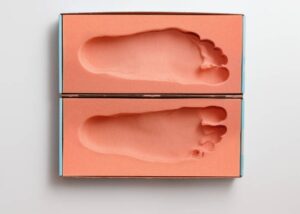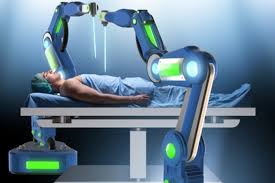Podiatry is one of the most utilised Medicare-subsidised individual allied health services. However, this profession remains under pressure to sustain itself in the face of future funding and service model changes.
Ella loves all areas of podiatry but has a passion for sports injuries and foot care. Outside the clinic, you will find her on a soccer field or training for a marathon with her dog! For professional podiatry specialist Adelaide, check this out.
Biomechanics
 The human body is an incredibly complex system composed of trillions of cells. It is also governed by the same fundamental laws of mechanics that govern simple metal or plastic structures. The study of the response of the musculoskeletal system to mechanical forces is known as Biomechanics.
The human body is an incredibly complex system composed of trillions of cells. It is also governed by the same fundamental laws of mechanics that govern simple metal or plastic structures. The study of the response of the musculoskeletal system to mechanical forces is known as Biomechanics.
Sports Biomechanics studies human movement during exercise and sport, applying physics principles to improve performance and reduce injury. This is accomplished by analysing an individual’s movements and providing recommendations for improving form and boosting results.
For example, studying the forces that lead to ankle sprains may help researchers determine how to prevent them in the future by examining factors such as shoe design and playing surface. In addition, research may assist in developing new training techniques based on mechanics to improve athletic performance.
Dry Needling
Dry needling is a modern technique used to ease muscle pain. Physical therapists use thin needles to target “trigger points,” or knotted muscles. During the procedure, your provider will sterilise the treatment area and place a filiform needle in your skin. The needles are fine, sterile and single-use. Your physical therapist may also put a plastic guide tube over the needle to help with accuracy. For professional podiatry specialist Adelaide, check this out.
The needles stimulate a twitch response in the muscles to ease the trigger point. They may also be paired with electrical stimulation.
Studies show that dry needling helps with several conditions, including fibromyalgia and myofascial pain syndrome. These conditions are painful because of tightness in the fascia, a sheet of connective tissue that wraps your muscles. Dry needling eases these knots and improves your movement.
Orthotic Therapy
Orthotics are shoe inserts that can help improve posture, reduce pain and prevent injury. They support the foot, correct faulty alignment and redistribute pressure evenly across your feet.
Our podiatrists can design customised orthotics for you and manufacture them in our on-site lab. Most private health insurance providers cover custom-made orthotics under their extras benefit.
Kids with flat feet, in-toe or out-toe, bow legs, curling toes, or other foot problems often require orthotics. If treated early, these conditions can be corrected before they become permanent and limit the child’s activities.
Some people may require specialised orthotics for conditions such as Cerebral Palsy, Parkinson’s Disease or following a brain injury (TBI). These orthotics will be customised to the individual to address spasticity and improve function.
Sports Injuries
Podiatrists are highly skilled in managing sports injuries of the lower limb. Often a niggle can lead to serious problems such as Lisfranc injuries (fractures or severe bruising in the midfoot), tendonitis, stress fractures and foot ulcers.
Athletes and people who enjoy playing sports have a high risk of injury as they push their bodies to the limit. This can lead to new injuries as well as old ones flaring up. For professional podiatry specialist Adelaide, check this out.
Whether it’s an ingrown toenail, a rash on the foot, a painful knee or a nail problem you need help with, we are here for you. We are bulk-billed in South Australia and have experience treating older people, people with diabetes and people with chronic medical conditions.
Heel Pain
Many patients with heel pain find that rest decreases symptoms, but symptoms can return as soon as they resume activity. A heel splint, worn while sleeping or walking, can help prevent this from occurring. It is also helpful to perform gentle calf stretches, particularly first thing in the morning.
Heel pain can occur anywhere under, behind, or on the side of the heel bone (calcaneus). It is usually caused by excessive pressure on the foot due to abnormal walking or running patterns and excess weight. Tight calf muscles may also cause heel pain.
Heel pain in the back of the heel is usually due to Sever’s disease, a condition that occurs in active growing children between the ages of 8 and 14. It happens when excessive tension and stress are placed on the calcaneal apophysis growth area.

